Alaska to Argentina on a bicycle built for two
Would you hop on the Random Tandem with Cam Williams?
A pickup truck crawls past late in the evening. It stops. Inches forward, then reverses. From his camping spot on the side of a highway, Cam Williams gets the feeling that the driver is trying to peek through the long grass in which he and his riding partner, John, have set up their tent.
This is in Mexico; the state of Michoacàn, to be specific. It’s a known hotspot for cartel activity and though Cam and John didn’t plan on staying here, they’ve been forced to change their route after copping 27 flat tyres over nine days of cycling.
The next 10 seconds are burned into Cam’s brain as the most terrifying he has ever experienced: a bright light floods the night and three men, each with a rifle, come sprinting through the grass. They’re yelling in Spanish – rifles shouldered – and ordering Cam and John out of their tent. Where are the drugs? How many people are with you? The men search the tent but come up empty handed. They search the surrounding bushland, too, but it’s not until they see Cam’s tandem bicycle that they start to calm down.
‘It turns out they were police,’ says Cam, who can, now he’s safely ensconced in a Melbourne pub, see the funny side. ‘It took a lot to convince them we weren’t smuggling drugs or part of the cartel. But what kind of weird cartel members would be travelling on a tandem bike?’
Sleep was hard to come by, especially after the police told Cam and John that they were stupid for camping there. It was one of the most dangerous places in the state, they said. But moving the tent would make Cam and John even more visible, so once the police left, they turned off the light and laid low. Later, Cam would ride with a Mexican guy who knew the area well. He asked Cam to show him where he’d been camping.
“It took a lot to convince them we weren’t smuggling drugs or part of the cartel. But what kind of weird cartel members would be travelling on a tandem bike?”
‘I pointed to it on a map and he just goes, “Oh my god”. He said there are two warring cartels in the area. The towns are very close, around 20 kilometres apart, and we’d managed to camp right in the middle of them.’
Despite the sleepless night, and the elevated risk that comes with constant exposure, Mexico proved to be one of the highlights of Cam’s ride. ‘I experienced more kindness there than I did anywhere else,’ he explains. ‘So many people pulled over to say I looked hungry or cold. They’d take off their jackets and try to hand them to me. Or they’d say follow me, we’ll make you dinner, you can stay for as many days as you want. There was so much warmth. And easily the best food I’ve eaten in my whole life.’
When Cam and I meet for a beer, he is taking a break from the final leg of his journey: a 4,000-kilometre ride from Sydney to his home in Perth. I’m stoked he’s agreed to catch up and want to tell him that riding a tandem from Alaska to Argentina and picking up strangers along the way is the best idea I’ve ever heard. I want to tell him that I’ve never been jealous of someone doing something like I am right now. I want to tell him he’s a visionary, a goddamn artist, but instead I say something like: cool trip, bro.
I’m desperate to hear every detail; that said, it’s impossible to cover a 652-day adventure – 29,000 kilometres with 30 cycling partners – within the time constraints of an afternoon pint. So what, then, is worth sharing? What is important? It’s easier, we agree, to know what’s not important; in Cam’s case, the why.
‘The “why” question is a hard one and it’s something I sympathise with because it feels like an important question,’ says Cam. ‘A lot of people ask why I’m doing this and I don’t have an answer. It’s just a thing I want to do in life. There’s sometimes an expectation of profundity, like I woke up and had a vision, or I wanted to prove something to the world, but that’s not the case. I’m doing it for the same reason you’re not doing it. You’re doing what you want to do in life because it feels like the obvious thing, and it’s the same on this end.’
It’s hard for me to accept riding a tandem across two continents as an obvious thing, but after listening to Cam, I can understand how he got there. In 2017, he travelled overseas for the first time and rode from Austria to Spain despite having minimal experience in the saddle. His two-month holiday turned into eight, with half of it spent cycling through Eastern Europe. Cam fell in love with bike touring and wondered what an extreme version might look like. He checked out a map of the world and the longest immediately visible point-to-point was the Americas.
‘It’s a fairly common bike route,’ says Cam, ‘but at this point there was no tandem involved. I came home from Europe and it [the Americas] became my only priority in life. I had it booked for 2019, which then got pushed back to 2020. Then, with Covid, and the fact you have to start in the summertime, I got delayed again until June 2022. I felt horrible about it. I’d been working towards this dream for years and it really felt like a lot of the big things had to yield to that dream in terms of where I lived and my relationships. To feel like those sacrifices were for something that might not even happen was just a really shitty feeling.’
Cam tried to twist the negative into some kind of positive. He could save more money and perhaps come up with a way to solve what was, in his experience, the main downside to bike touring: long periods on his own.
‘That doesn’t mean no people ever,’ says Cam. ‘It means no meaningful connections. So I reflected on my trip through Europe and remembered how many people said the same thing: this sounds amazing, I wish I could join. If only. If only I had the know-how. The bike. The courage. Especially women, for whom it’s trickier. I felt like a tandem was a solution to this. It seemed like an opportunity was there to ask strangers to join and even if 1% were open to it, I could ask 100 people and still find someone.’
Cam fired off an email to a cycling community in Fairbanks, Alaska. He explained his plan and received plenty of answers; all but one were very polite nos. The yes came from Danny, who wound up being Cam’s first riding partner. They spoke a lot then went silent for a year and a half while Cam was delayed. He eventually got back in touch, flew to Alaska and set off from Prudhoe Bay with Danny in the rear seat.
‘Those first eight days were, I think, the hardest of the trip,’ says Cam. ‘Mostly because of fitness. Neither of us had done a lot of cycling at that point, but misery loves company.’
Cam counts Danny as someone he’ll remain in contact with for the rest of his life. Together they cycled the Dalton Highway through tiny settlements like Deadhorse (bleak), Coldfoot (ouch) and Wiseman (ironic?). They parted ways in Fairbanks, where Cam found another riding partner to join him for four days, and after that, he was on his own for a month and a half.
‘I spent a long time on my own, but that was okay. A lot of people wonder whether a tandem is hard to ride on your own, but it’s just heavy. It otherwise functions the same. Weightwise, a fully packed bike is 75kg, plus I’m about 85kg. You add another human and you’re up around 250kg, so it’s a fair bit.’
Cycling solo gave Cam an opportunity to spend time with people completing their own big journeys. One of the more memorable characters was Paul Kent, who does a lot of long-distance travelling by skateboard. Cam met him near the border of Alaska and Canada and discovered Paul was travelling 4,000 kilometres, by skateboard, to his home in Calgary.
‘Bikes are significantly faster than a skateboard, so I slowed down to ride with him for a couple of days. I remember asking him questions I never got a good answer to, like, you’ve got no brakes – when you go down a steep hill, how do you know what it’s going to do? He said it was all part of the fun. I asked him how fast he could go and he said that he couldn’t track speed but was fairly sure he’d sometimes clock over 100km/h. No way, I thought. But then I was zipping down a hill at 55km/h one day. I didn’t realise he was anywhere near me, and like a cannonball out of hell, he sped past tucked in his little aerodynamic pose.’
Despite the weight of the tandem, and his desire to bring others along for the ride, Cam came to cherish these periods of alone time.
‘I had no idea how good the breaks would be,’ he says, admitting he wouldn’t want to do this kind of trip with continuous company. ‘There’s a real benefit to travelling on your own, that rhythm of changing from slower solo time to more social times. And there were definitely times I got sick of someone being on the back of the bike; even if they’re great, you’re always ready to have some time on your own again. But it was interesting seeing the difference in mentality when things went wrong, how different it is when you’re solo versus riding with a partner. When you’re on your own you can go down such a spiral of self-pity and thinking how horrible things are, so it was really nice to see how much we lifted each other up. And that’s not necessarily correlated to how well you get on with each other; however you get on, you pick up the slack when the other is feeling low.’
Another aspect Cam has enjoyed is creating short films for his YouTube channel. He isn’t sponsored or anything, so his films are made for the fun of it, for the simple act of creating. At the end of a stint with a partner, he would always ask if he could interview them and go through some questions.
‘You get to ask them questions that might not be verbalised otherwise,’ he says. ‘It’s a chance to sit down and talk about various parts of the trip together. Like, back on this day, when we had this flat, it felt like there was quite a bit of tension between us – how were you feeling that day? Little moments where it felt tense and I’m wondering whether they felt the same way about me, or about the situation we were in. It’s been really interesting.’
The filming also proved a welcome distraction during tough days in the saddle. It’s been nice, Cam says, to return to the question of how he can tell the story of his trip in an engaging way. An experienced pilot, Cam should have plenty of work opportunities once he pedals into Perth with his best mate in the rear seat, but right now he’s considering taking more time off to put together the final four films.
Both the script and storyboard are mostly finished because Cam’s worked on them as he’s been going. The storytelling makes him no money, he says, and right now he’s 50/50 on whether he’ll go back to work or concentrate on the series. I’ve enjoyed watching so far, so I really hope he gives the films his all. And there’s a moment towards the end of Cam’s first film, The Random Tandem Episode 1, that has stuck with me. It’s when Cam and Danny arrive at Danny’s house in Fairbanks having completed the Dalton Highway. Cam narrates:
For Danny, cycling the Dalton Highway was the completion of a bucket-list item that he’s wanted to do for years; for me, it was that too, but it was also less than 3% of my total distance, which was a really exciting, but quite an intimidating thought.
The people Cam picked up along the way have had, I imagine, the adventure of a lifetime. Joining a random Australian on the back of a tandem? Kinda wild. And I guess I find that interesting because each of these people play a relatively small role in the grand scheme of Cam’s own adventure.
Take Cesar, for example, whom Cam met at the border crossing between Costa Rica and Panama. They got talking, parted ways, and half an hour later Cam received a message asking if he’d cycle back to pick Cesar up. No worries, Cam replied. They dropped Cesar’s bags at a hotel and spent three or four days cruising south together. For Cesar, it was an act of pure spontaneity; for Cam, it was business as usual.
‘I think about that with a lot of people,’ says Cam. ‘What was a piece of the puzzle for me was, for a lot of people, a really cool one-off experience. Even here, now I’m riding through Australia, my most recent partners said they got my email and thought: this is great, this is going to happen no matter what we have to do. It’s been a big priority for a lot of people and some have even flown in to meet me. It’s pretty cool.’
While Cam can appreciate that his trip is of interest to others, and that he’s been able to facilitate these unforgettable adventures for people, he’s wary of being held up as someone to aspire to or – god forbid – inspirational.
‘You get presented as something much more grandiose than what you feel you are,’ he says. ‘People use big words like inspirational, and I don’t really feel comfortable with that, but I guess they’re talking about their own experience. That you’re inspirational to them. And no amount of legitimate humbleness can take away from the fact that you have inspired someone. I always cringe a little when people really kind of adore what I’m doing, or build it up to be much bigger than it is. Some people talk about this being a social experiment, which it’s absolutely not. Others will say I could never do that, and I’m always like, I heavily suspect you could.’
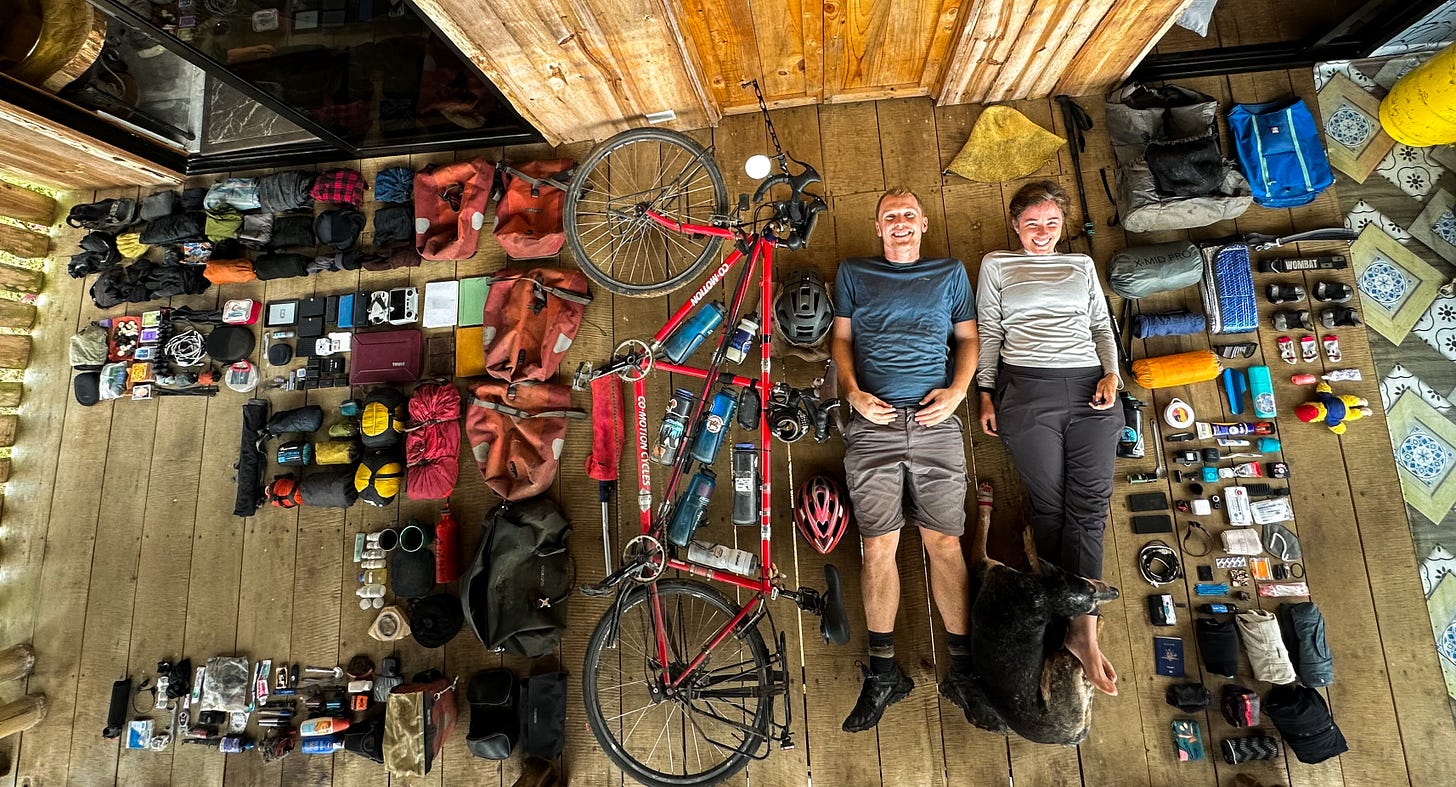
I suggest that perhaps the inspiration comes not from the physical feat itself, but rather the act of committing to something that many would deem, um, unusual?
‘That’s a good point. A lot of it isn’t the doing – it’s what you’ve walked away from. And in a way, you know, there’s an argument that that’s where the courage lies. It takes a bit of commitment, or chutzpah – a word I learned from an Israeli couple I met on the road – to say no, I’m going to do this thing I want to do at the cost of not pursuing a career or seeing family or friends for a while.’
I ask Cam if he believes his time on the tandem has changed him. And to create an air of scientific inquiry, I make a couple of incoherent references to brain chemistry. Synapses and neurons. Cerebellum. Did I mention I’m drinking a heavy stout?
But what I’m really trying to ask is: doth his veins overfloweth with chutzpah?
‘Truthfully? My gut feeling is no. Because it was still a fairly normal life. I still got up and had breakfast, I was still being fairly social. It wasn’t all-consuming. Having said that, I definitely feel like I changed a lot when I rode through Europe. I was 24 and still learning about who I was. Or maybe change isn’t the best word. It was more a matter of discovery. You find you have a more crystalline view of who you are. You have more confidence in that person and how that person fits into this world. That all came in hindsight, so there’s an argument to be made that I’m not far away enough to see any change that might have happened to me on this trip. But I do have a very significant – and this is obvious, I suppose – feeling of accomplishment.’
Well, yeah.
I mean – no shit.
You can keep up with – and catch up on – Cam’s journey on Instagram, Facebook or YouTube (where he’ll hopefully be sharing his final films).
A note on People & Places
You may have noticed that P&P offers a paid subscription option. This works as a kind of tip jar, so if you’d like to offer monetary support, please consider becoming a paid subscriber below. For now there is no difference in what you receive as a free or paid subscriber; either way, you’re appreciated. Thanks again for being here.

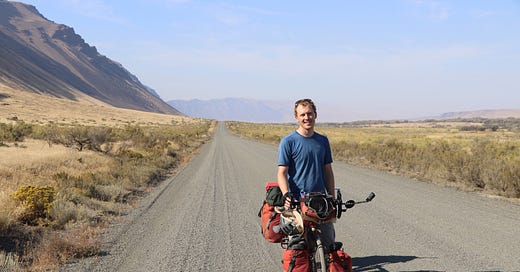


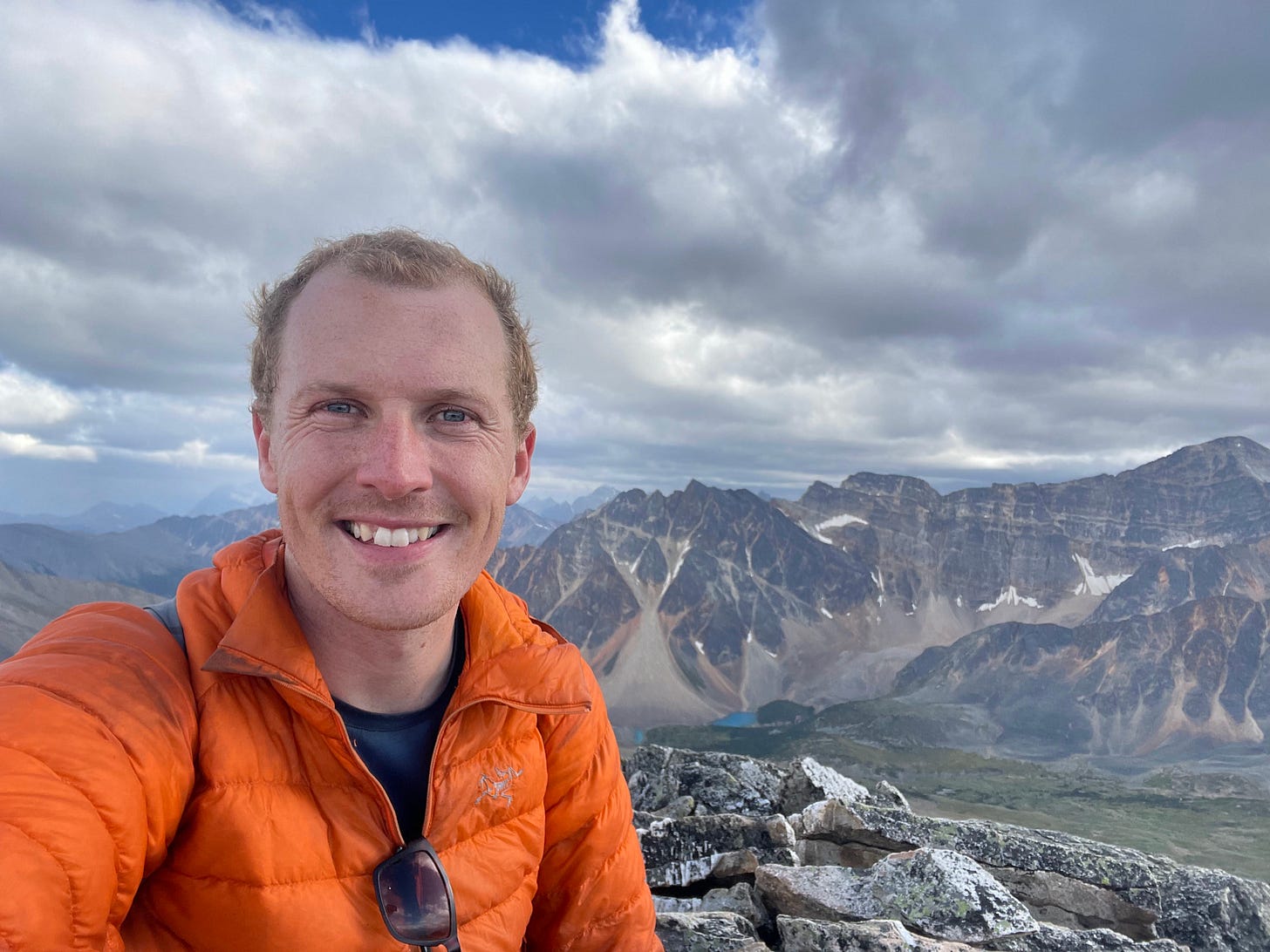

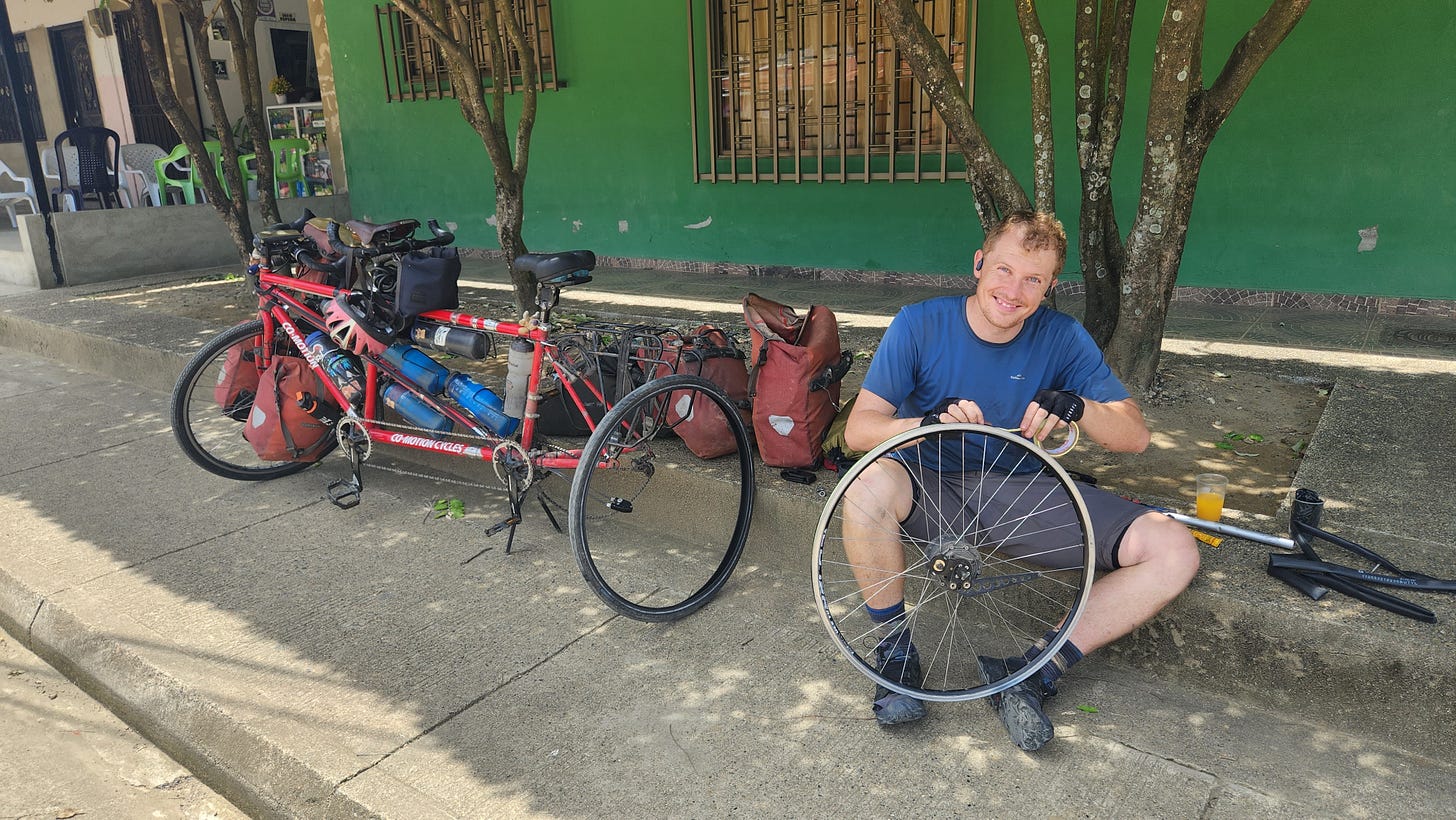
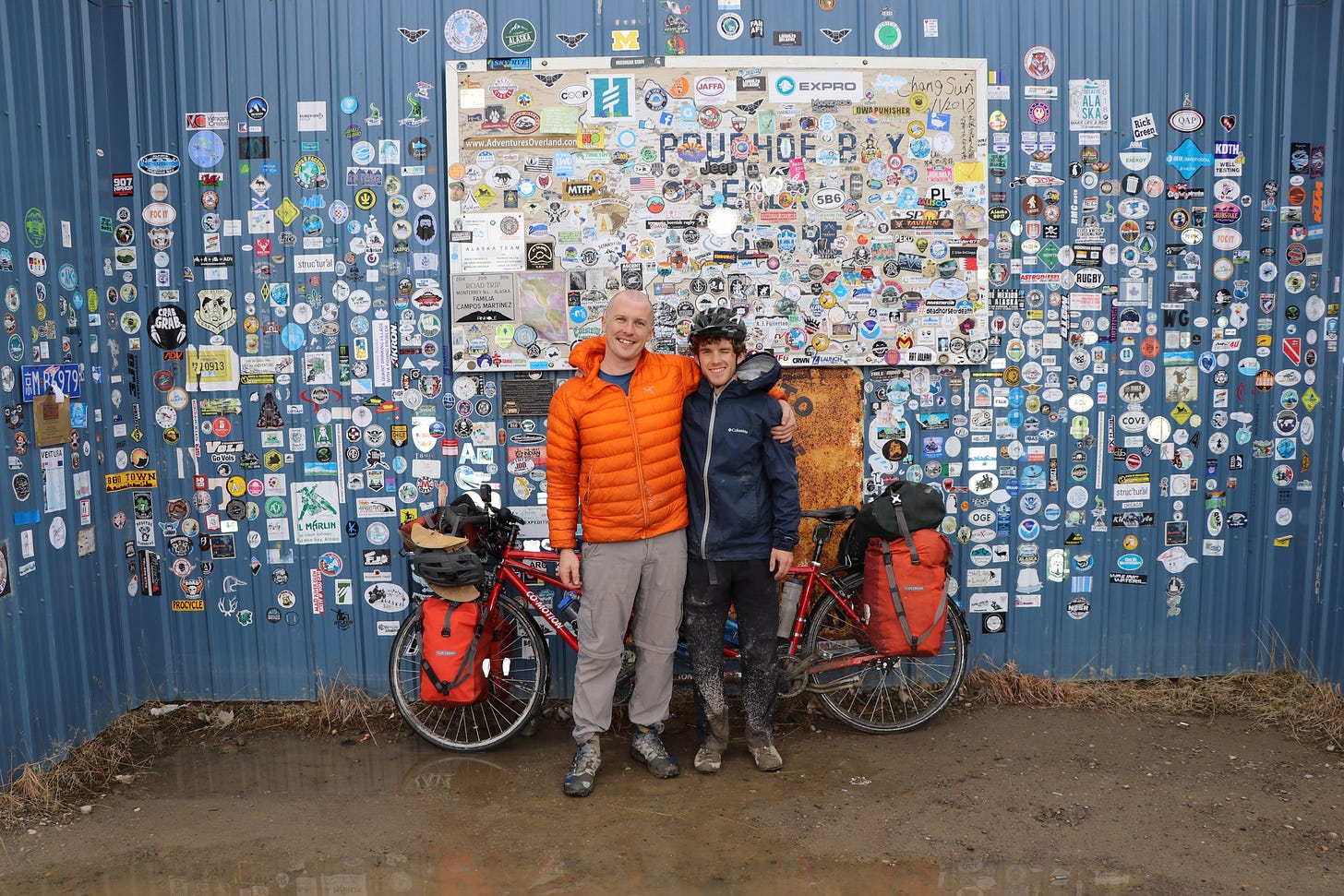

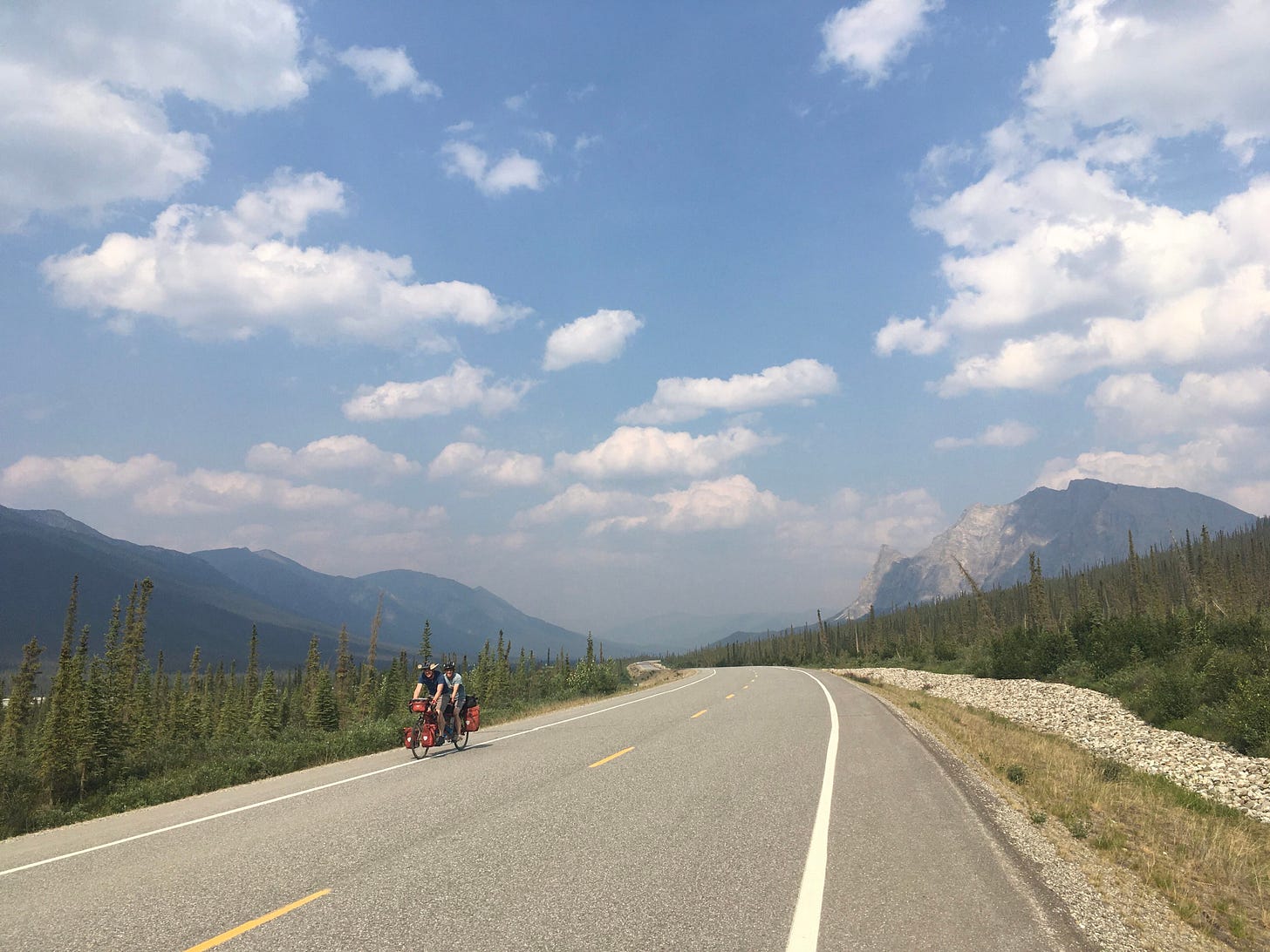
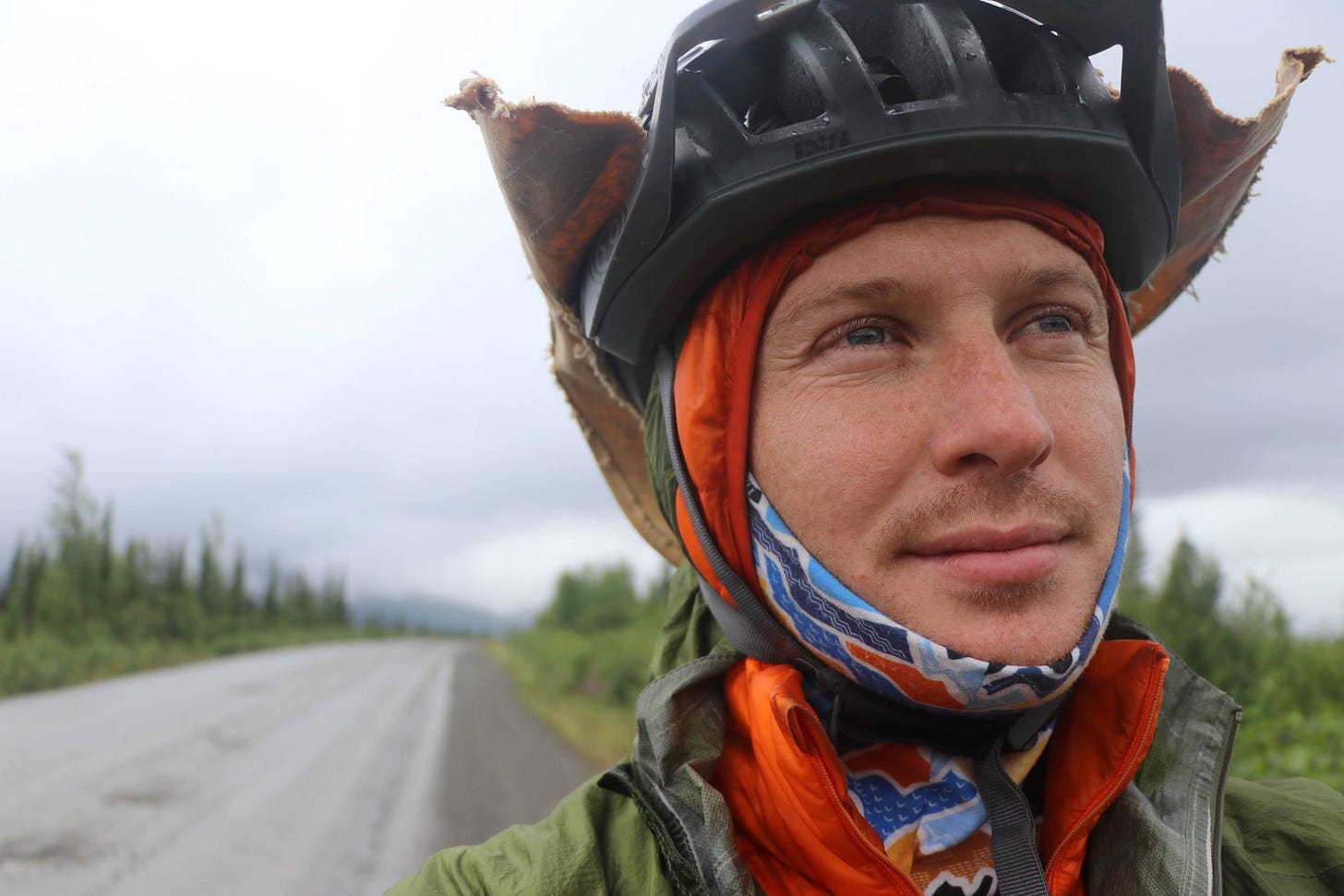
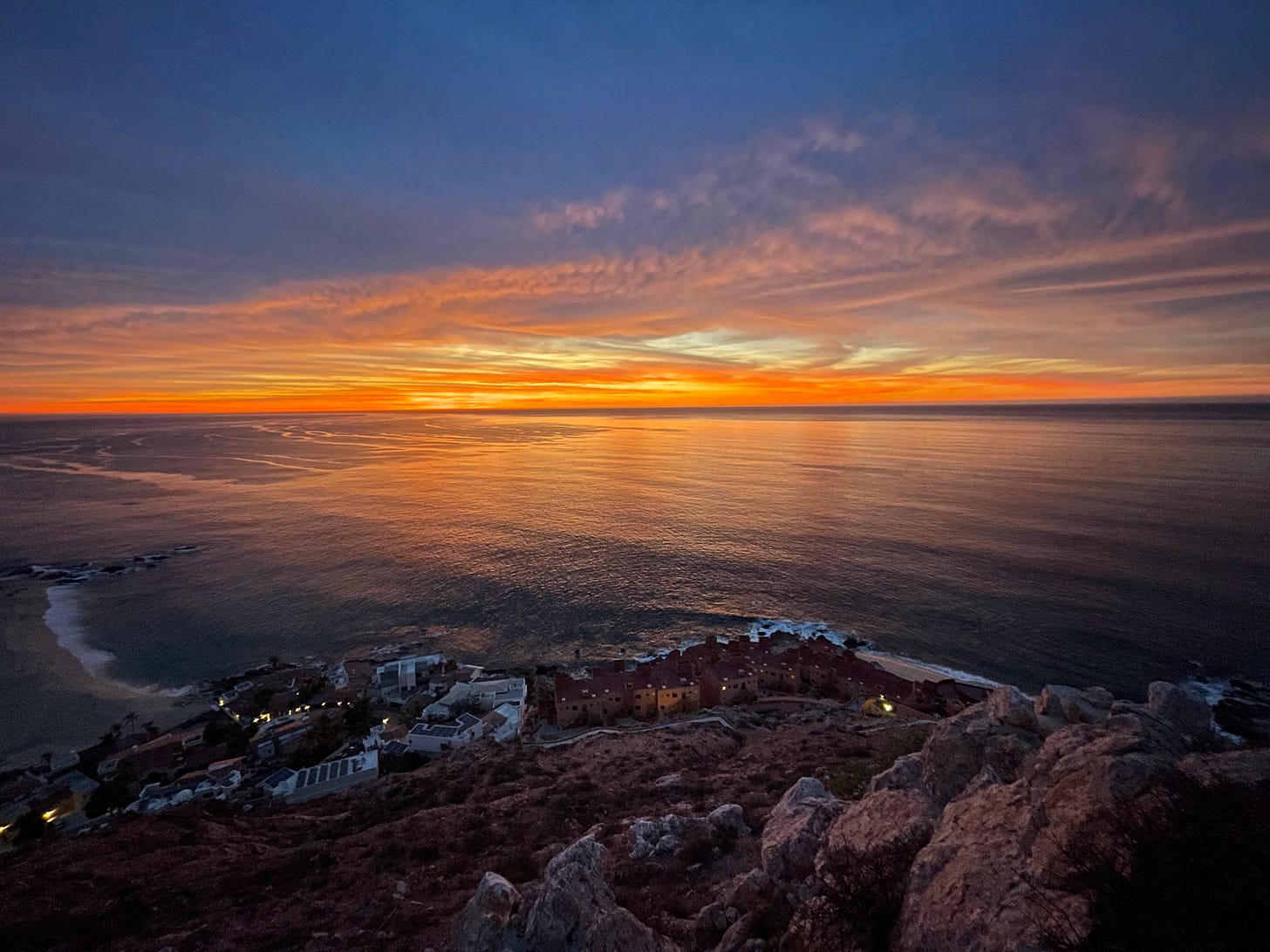
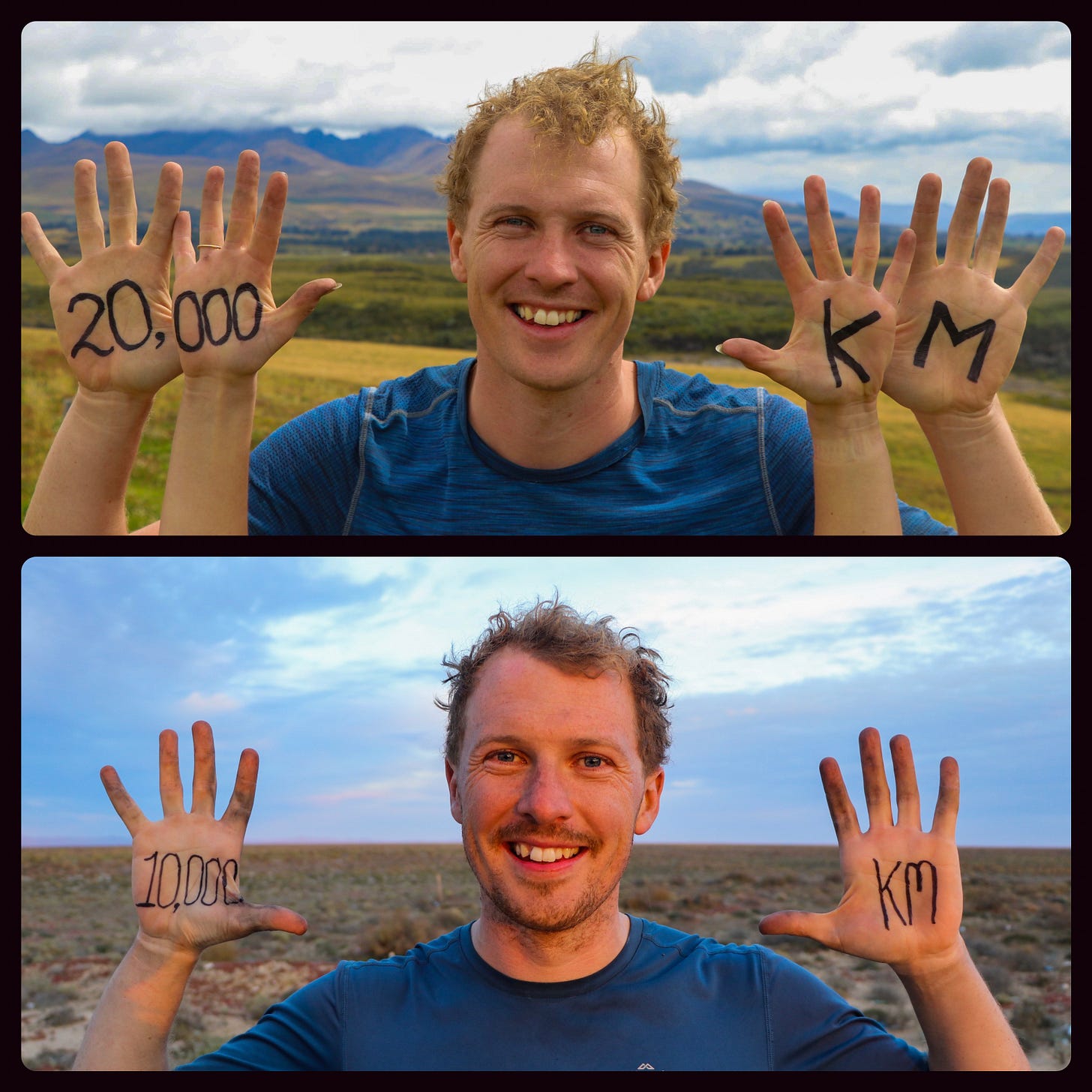
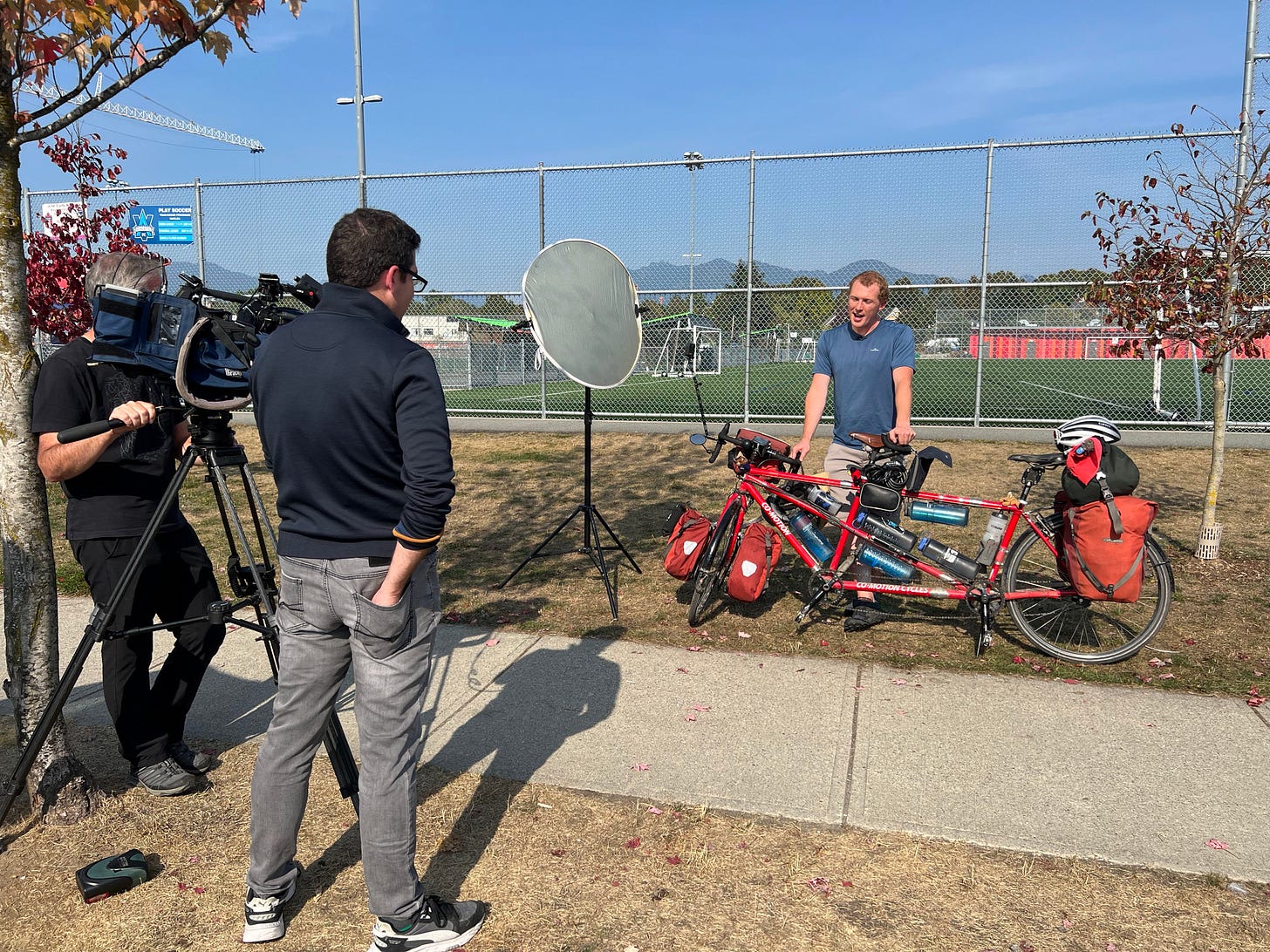
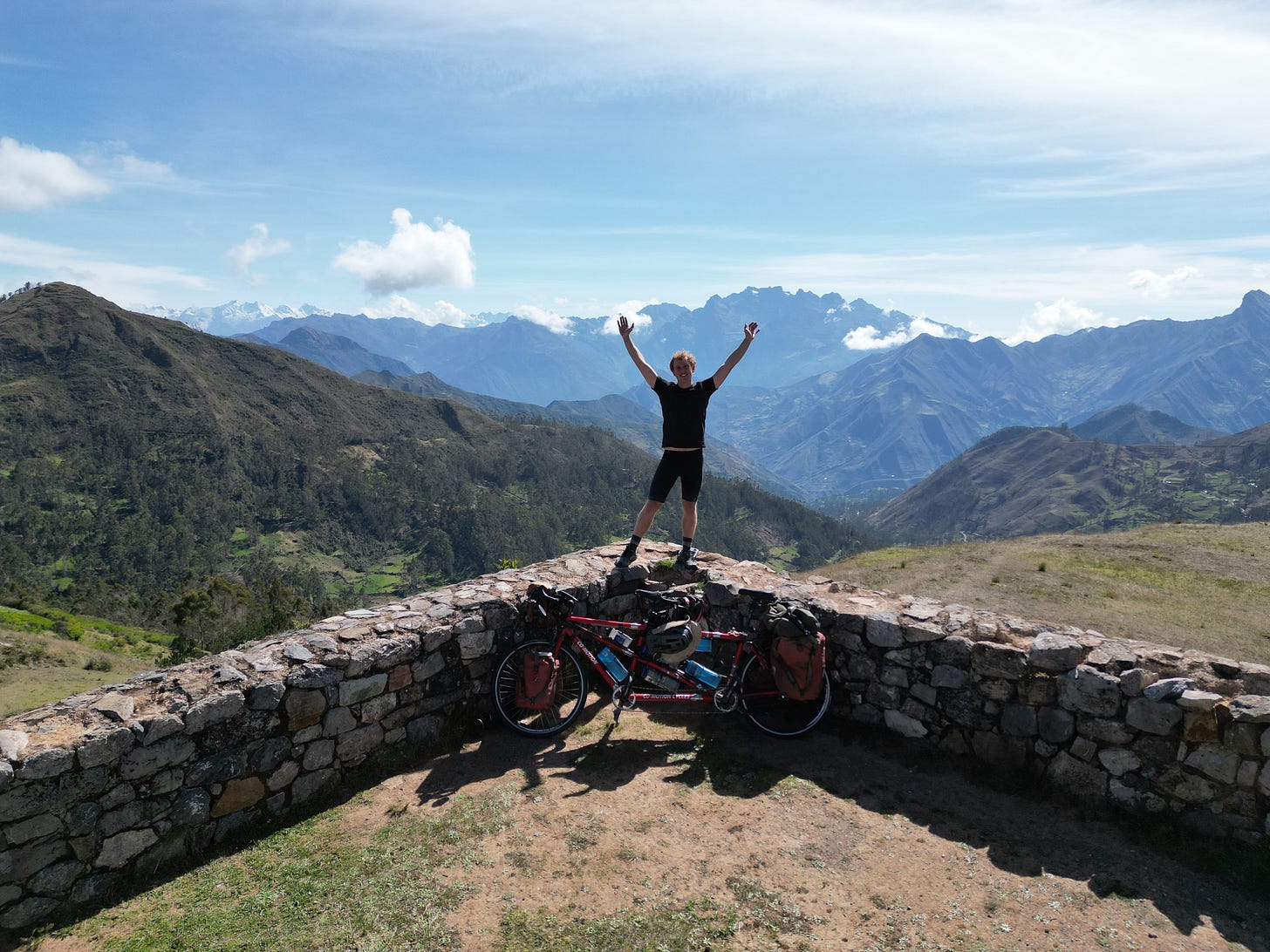
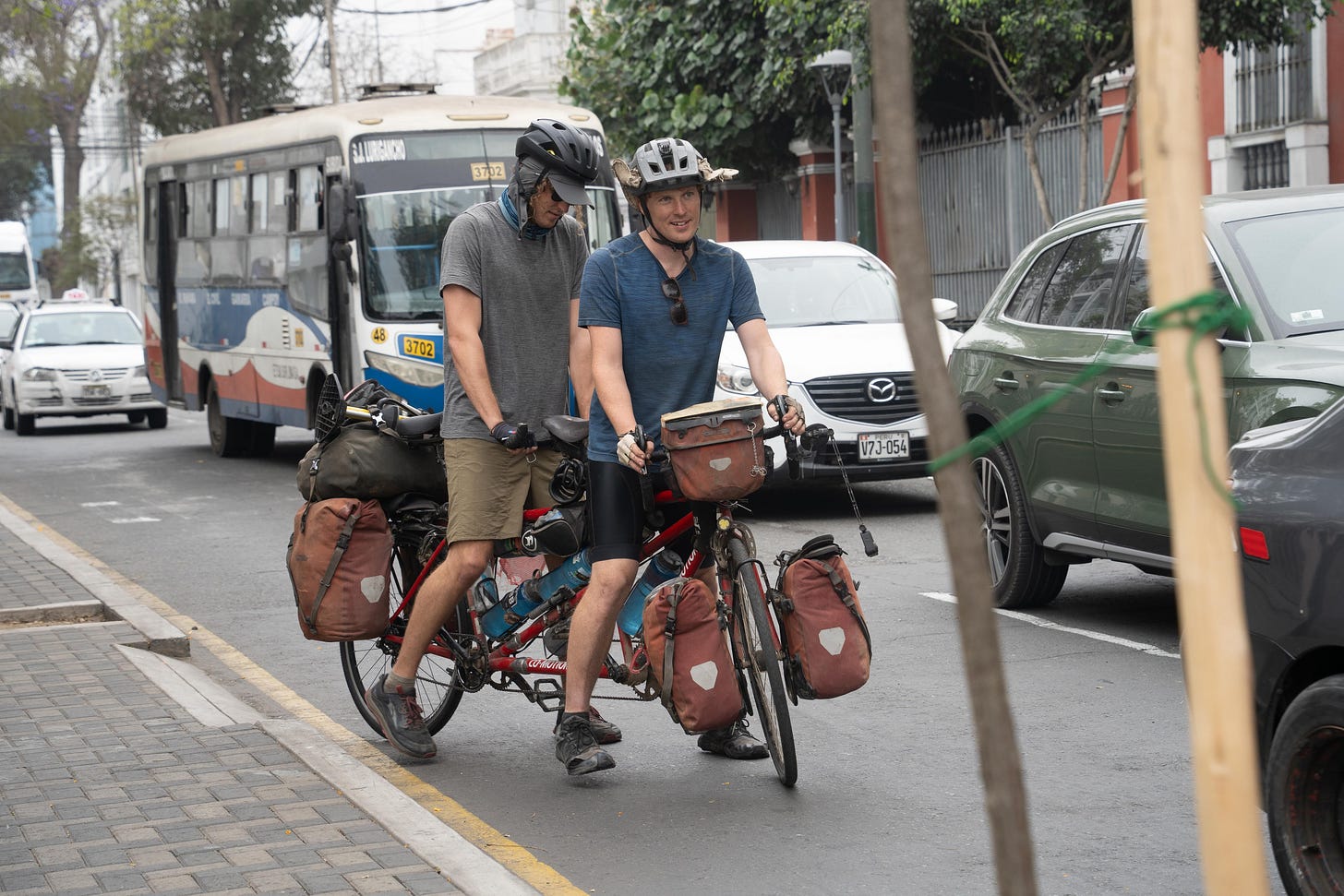

Ah man that is awesome. Not a bad idea for next time I feel like riding a bike, perhaps...great read mate, welcome back!